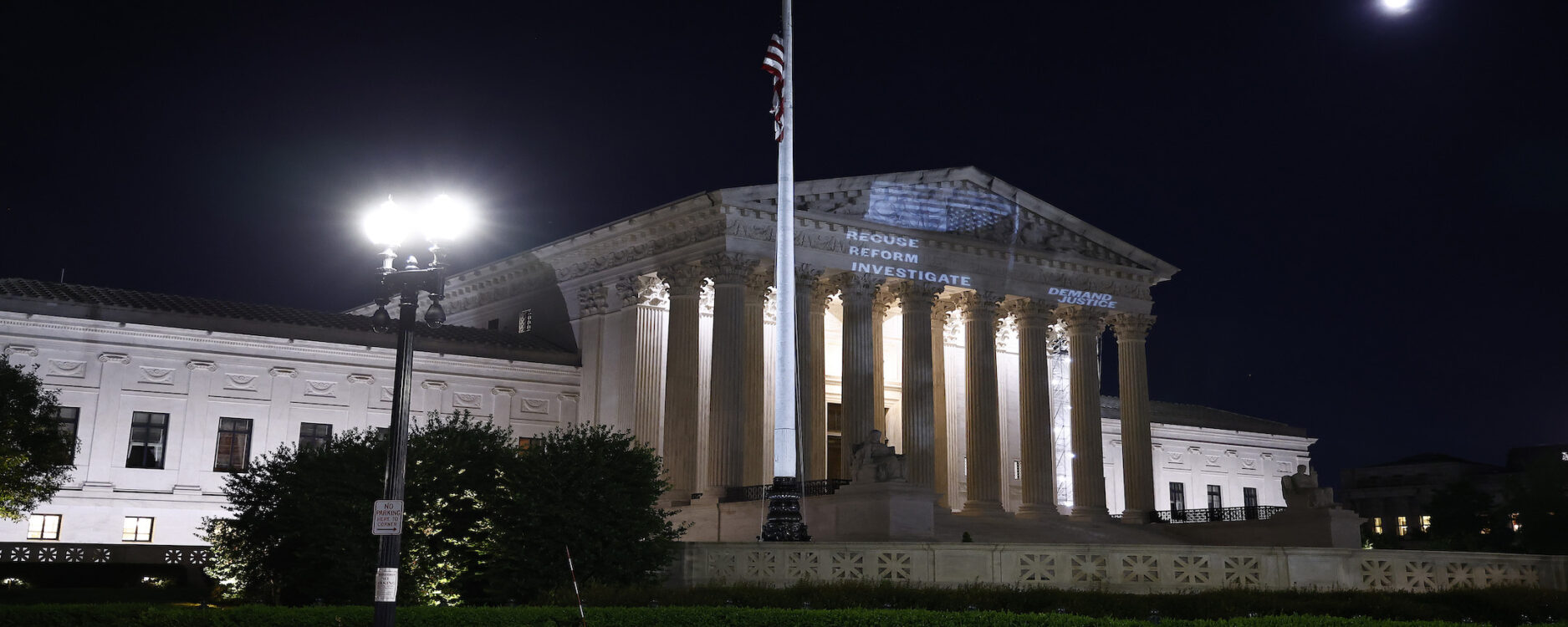In America, we don’t want kings or queens. But Congress is allowing the men and women on the Supreme Court to act as if they wear crowns instead of robes.
Flagrant evidence of corruption without any oversight. Unchecked, lifetime appointments. Decisions that consolidate lawmaking power improperly and dangerously in the courts.
There are three branches of government—legislative, executive, and judicial. Every child learns this in school. And each branch is designed to have checks and balances over one another. Yet over the past several decades, the legislative branch has appeared to grow fearful of its duty to assert such checks over America’s courts.
Congress used to require the Court to hear certain cases. Congress used to regularly expand and update our lower courts to better serve the needs of justice. Congress used to require justices to ride circuit, meaning serving on lower courts in addition to the Supreme Court. Congress has even created different tiers of service for judges and justices.
But in recent decades, the judiciary has been allowed to increasingly write their own rules and consolidate their own power.
The Constitution requires that we have one Supreme Court, a critical part of our democracy. But the Constitution also gives Congress the power to make sure that one Supreme Court actually serves the people and not themselves.
It is time for Congress to once again do their job.
Four Steps To Reform Our Courts:
Demand Justice has led the charge to remind Congress of their duty to ensure the courts work for all people by spearheading the movement to expand the Supreme Court. Doing so in a way that would bring balance to the Court’s current extreme, far-right majority would help ensure the Court better reflects the values of the American people.
Presidents that the American people elect for one term shouldn’t be able to appoint the same–or even more–than presidents they elect for two terms. Yet that is exactly what our current system allows to happen.
Instead of having justices serve unchecked for life, we should create term limits that ensure justices serve a uniform number of years. Term limits would give each president the opportunity to appoint the same number of Supreme Court justices each term, reducing partisan gamesmanship around each confirmation and making the Court more democratically representative.
The Supreme Court is the least accountable part of the federal government, with no binding code of ethics. Faced with multiple ethics crises and plummeting trust from the American public, the Court has made clear it is unable or unwilling to meaningfully police itself.
In fact, just last year, when the Court released what it claimed was a new code of ethics designed to restore public trust in its members–they made following those rules optional.
Congress should institute a binding code of ethics so that Americans can trust the justices are ruling based on the law, not politics and personal interest.
While the Supreme Court is the most high-profile part of the judicial branch, the vast majority of cases in the United States are heard at the district and circuit court levels. Here too, our courts are in desperate need of reform. Right now, we have too few judges and too many cases, which means Americans are waiting too long for their cases to be heard.
In the past, Congress regularly added seats and reorganized the courts to better serve the American people–but we haven’t had any meaningful update of this sort in well over three decades, despite dramatic changes to the population of the country.
Dramatically expanding the number of circuit and district court judgeships will make the judiciary more efficient and more effective, and it will present an opportunity to increase diversity in the judiciary.


